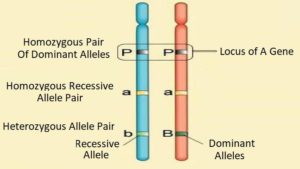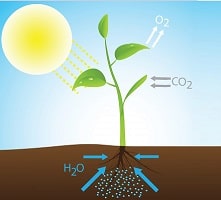Difference Between Gene And Allele With Comperison Table IN Detail…
We explain that difference between gene and allele? With definition, characteristics, functions and heritage, operating And differences, In addition: Genotypes and Phenotypes, Dominant And Recessive Traits and comparison table to asily understand for all levels.
Genetics is the branch of biology that studies inheritance, that is, the processes by which parents transmit their genetic load to their children. Genes can be described as storage units for genetic information. Each gene is a fragment of DNA that will later determine the genetic traits of each individual.
Alleles, on the other hand, are all the possible variations that a given gene can present.
It is important not to confuse these two concepts, because although they are similar, each one is responsible for a different stage in the process of creating a new life.
After reading this information, which you surely did not know, in those human biology classes you will leave your teacher and classmates surprised.
What Is A Gene?
The word “gene” comes from the Greek root génos , which means ‘race’ or ‘origin’. Gregor Mendel (1822-1884) was the first to describe genes as “bundles of heredity.”
The gene is the functional unit of heredity . It consists of a fragment of DNA (deoxyribonucleic acid) that contains the genetic information for the synthesis of a protein. Proteins are the macromolecules that perform the main functions of a cell. So, A gene is a piece of DNA that determines a trait. A trait is a characteristic, or a trait, that is passed from one generation to another, such as height or eye color.
Genes come in multiple forms or versions. Each of these forms is called an allele. For example, the gene responsible for the hair color trait has many alleles: one allele for brown hair, one allele for blonde hair, one allele for red hair, etc.
In fact they fight between both to predominate one over the other. As is the case with the genes of the father or the mother. The winner sets the skin color, eye color and hair shape.
Genes determine the physical and biochemical characteristics that an individual will have. They are manifested through visible physical features (phenotype), such as the color of the skin or eyes, as well as the functioning of the organism.
The set of genes of an individual is known as the genome and determines the genotype or DNA sequence of the genome. The phenotype is represented by the visible and measurable characteristics and traits of the living being.
The position on the chromosome of a gene is called a locus. For example, the insulin gene (INS) is found on human chromosome 11 at the 11p15.5 locus, while the gene for melanocortin receptor 1 (MC1R), responsible for skin pigmentation, is found at the 16q24.3 locus.
What Is An Allele?
The allele is the variation, or change, of how a gene will behave. An allele is a specific variation in the DNA sequence of a gene that determines how the genetic characteristics will be expressed in the individual. For example, the androgen receptor gene has several alleles, one of which is associated with hair loss in men (baldness or androgenic alopecia). And for the color of the eyes, where there is a specific allele for the colors green or blue.
What’s The Difference Between Gene And Allele?

Characteristics Of Gene And Allele
Gene: As we mentioned before, these move between individuals through descent. Save the information and determine the phenotypic traits of the body. It is estimated that there are more than 20,000 genes that characterize differently.
Allele: This is presented in pairs, one for each parent. When it is dominant the characteristics are presented in the phenotypic traits. Whereas when it is recessive it remains within the individual, but dominated by the same gene. This expresses the phenotypic traits of an organism.
Functions Of Gene And Allele
Gene: Genes govern the traits of an organism. They do this by acting as instructions for making proteins . Proteins are the various molecules that perform many critical functions in our bodies, such as making hormones and creating antibodies.
Allele: Humans have two copies (or alleles) of each gene, one inherited from each parent. Alleles play an important role in shaping the individual characteristics of each human being. Alleles are versions of the same gene with slight variations in their DNA base sequence. These small differences between alleles of the same gene contribute to the unique characteristics of each person.
Heritage Of Gene And Allele
Gene: Heredity is how traits are passed on to offspring. Genes determine your features, such as your height, what color your eyes are, and what color your hair is. But a single trait is usually determined by multiple genes, rather than just one. For example, height alone is determined by more than 400 genes .
Allele: Humans and other multicellular organisms have two alleles at the same site on a chromosome. Chromosomes are very long chains of DNA wrapped around special proteins called histones. Humans have 46 chromosomes; each parent passes 23 of those chromosomes. Consequently, the expression of any given trait would depend on two sources of information. These two sources are a paternal allele and a maternal allele.
Operating Differences Between Gene And Allele
The gene is responsible for maintaining information about the proteins that indicate the trait. These have the code inside them, which will be the dominant clearing. They are inviolable according to their concepts. While alleles maintain limited specific traits on each gene.
 Human beings have two sets of chromosomes which are 23 in pairs, acquired from each parent. These are located in the same place on each chromosome.
Human beings have two sets of chromosomes which are 23 in pairs, acquired from each parent. These are located in the same place on each chromosome.
Genotypes And Phenotypes
A genotype is all the genes that your parents pass on to an individual. But not all the genes you carry end up translating into visible traits. The set of physical characteristics that an individual has is called a phenotype . The phenotype of an individual consists exclusively of expressed genes.
For example, let’s take an individual who has one allele for blonde hair and one allele for brown hair. Based on this information, we know that her genotype includes blonde hair and brown hair. If we observe that the individual has blond hair, that is, blond hair is the expressed trait, then we know that his phenotype includes blond hair, but not brown hair.
Dominant And Recessive Traits
Genotypes can be homozygous or heterozygous. When the two inherited alleles of a given gene are identical, this specific gene is called homozygous . Alternatively, when the two genes are different, the gene is said to be heterozygous.
Dominant traits require the presence of a single allele for the given trait to be expressed. Recessive traits can only be expressed if the genotype is homozygous. For example, a V-shaped hairline is a dominant trait, while a straight hairline is recessive. To have a straight hairline, both alleles must be straight hairlines. However, to have a V-shaped hairline, only one of the two alleles of the hairline must be V-shaped.
The gene and the allele are terms that are widely used in the modern era in the field of medicine. Delving into both concepts they are totally different. When some think they are similar concepts. The science of medicine is so broad that inside it breaks into different explanations.
Today, as always, we bring you first-rate information, where we will discuss the differences between the gene and allele . If you haven’t heard it before, then don’t hesitate to read this section.

Gene And Allele Differences
| Gen | Allele | |
|---|---|---|
| Definition | Each gene is a segment of DNA that functions as a storage unit for genetic information. A gene is in fact the smallest unit of biological inheritance. | On the other hand, an allele is each one of the two or more (if applicable) possible variants in which a gene is expressed. Worth mentioning |
| Quantity | It is possible to find up to 20 thousand genes distributed in the 23 pairs of human chromosomes. | Each individual inherits two alleles for each gene; one from the mother and one from the father. |
| Where are they? | Within each chromosome. | Within each gene. |
| Types | Coding genes : with information to synthesize proteins.
Non-coding genes : they act as regulators of protein synthesis. Constitutive genes : they are expressed continuously. Household genes : they maintain the basic functions of the cell. Facultative genes : only expressed under certain conditions. Inducible genes : they are expressed in response to certain stimuli. |
Dominant alleles : it is expressed whenever it is present.
Recessive alleles : it is expressed only when it occurs in identical pairs. Wild alleles : is the allele that is predominantly expressed in the majority of the population of a species Mutant alleles : any allele other than the wild one. |
| Function | Genes are responsible for the expression of traits. | Alleles are responsible for the variations in which a certain trait can be expressed. |
| Pairing | Genes do not occur in pairs. | Alleles occur in pairs. |
| Examples | There is a gene for eye color, blood type, hair type, and skin color. | Whether the eyes are blue or brown eyes; blood, type A or B; hair, curly or straight, and skin, light or dark. |


